Movement and Development Lesson Plan

Lesson Plan Mindmap for Movement and Development – Click to Enlarge
CLICK ICONS TO JUMP DIRECTLY TO EACH SUBJECT ON THIS PAGE








MOVEMENT AND DEVELOPMENT
This page is a free-shared lesson plan archive for teaching all educational subjects within the context and theme of “Movement and Development”. It is purposed for use in community education environments, homeschool environments, traditional schooling environments, or as a supplemental and fun addition to any education program. As part of the complete Education for Life Program, this lesson plan is specifically designed to work in conjunction with the other components: Foundations of Teaching, Curriculum, Teaching Strategies, Learning Tools and Toys, Evaluation Model, and The Ultimate Classroom. If you’d like to learn how all these components work together, click here. Click here for the specifics focused on just using the lesson plans:
CLICK HERE FOR A DETAILED TUTORIAL ON HOW TO USE THIS LESSON PLAN
NOTE: The colors are provided as a possible linear progression (red/easiest to violet/most challenging) for people that might prefer a more linear structure. Our core philosophy, however, is that through creativity every color can be made easy or challenging for any learning level.
RELATED PAGES (mouse-over for descriptions and click for complete pages)
EDUCATION OVERVIEW | HOW TO USE THIS COMPONENT | OUR OPEN SOURCE PURPOSE
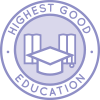
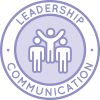
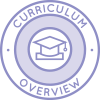
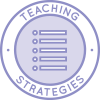
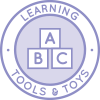
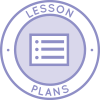
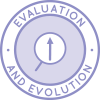
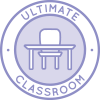
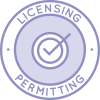

WAYS TO CONTRIBUTE TO EVOLVING THIS EDUCATION PROGRAM WITH US
SUGGESTIONS | CONSULTING | MEMBERSHIP | OTHER OPTIONS
A NOTE ABOUT ALL ONE COMMUNITY LESSON PLANS
The One Community lesson plans are intentionally designed for use in ANY educational environment and with ALL educational, cultural, religious/spiritual, and philosophical approaches to teaching and learning. They are designed without an ideological approach and specifically so they can be adapted to include the views, preferences, methodologies, and/or ideologies preferred by different parents and teachers.
For maximum flexibility and adaptation, they are also designed to be combined to teach multiple subjects at the same time. Doing this increases the creativity, effectiveness, and fun of your learning environment. Once we are on the property and operating our version of the complete school and Education for Life program, we will be adding video examples of how to combine the lessons. In the meantime, visit the Teaching Strategies page for a list of suggestions.
ARTS AND TRADES
CLICK HERE FOR THE COMPLETE SUBJECT OUTLINE FOR ARTS & TRADES
 | TEACHING ARTS AND TRADES WITHIN THE CONTEXT OF MOVEMENT AND DEVELOPMENT |
 | The Arts- Create an art piece* that represents what movement means to you.
- Create art* that moves, and present it to/use it with 5 different people. After each experience, have a discussion with the person about what occurred and what they felt and thought.
- Take a series of photos* of a dance so that it catches the movements, making sure the the quality of each of the pictures is good.
- Make a series of 5+ mini-sculptures* that would convey the idea of movement and/or development of an object.
- Choose a spheres or types of development and represent it in a series of 7+ art projects* using different types of art.
- Study the works of 10 artists whose works are specifically represent/utilize movement. Analyze the factors in the lives of artists which cause changes in their work and present your results at an lecture* at an art event, school, or museum.
- Organize a multi-day art festival* with the theme “Movement and Development”.
|
 | Trades- Explore your community with someone or watch videos to watch people of different trades. Discuss* the 3 trades you most associate with movement and explain the reasons why.
- Design and start a garden* to plant it for the optimum growth of each plant based on the movement of the sun, and explain your layout.
- Make an interior design element/toy/household item* with the use of moving particles such as water, sand, rice, etc.
- Make a piece of furniture* that would bring comfort or joy to you due to its ability to change its position/rotate, etc.
- Create a diet* for 3+ different groups of people (e.g. gymnastic or dance children of 4-6 years, athletic young adult vegetarians, 50+ year old body building women, long trek hikers, etc.) for balancing or developing function and movement while fitting their lifestyle needs.
- Develop a ventilation system* for a house, dome, apartment, etc. that creates the best air circulation.
- Create an amusement park* with the theme of movement and development.
|
| CLICK HERE TO EMAIL US IF YOU HAVE AN IDEA TO ADD TO THIS SECTION |
* Please note that anything with an asterisk is just a suggestion. The diversity of options with asterisks are interchangeable and purposed to stimulate your own ideas. Any one of these suggestions could be replaced with a written paper, any form of art project (drawing, painting, music, paper mache, clay, wood, knitting/embroidery, metals, etc. etc.), an experiment, a presentation, a mindmap, a computer program, a web design project, a piece of poetry or a song, an interpretive dance or play, a group project, or anything else. What we feel is most important is that both the Learner and the Teacher agree on an exercise/activity they both feel would be maximally engaging, fun, and effective. If you come up with an idea we haven’t already thought of, please share it with us.
ENGLISH
CLICK HERE FOR THE COMPLETE SUBJECT OUTLINE FOR ENGLISH
Note: Any language can be substituted for English. The subject is listed here as “English” because that is the primary language of most of the people on the team, and the official language of the country we’re building our initial location in.
 | TEACHING ENGLISH WITHIN THE CONTEXT OF MOVEMENT AND DEVELOPMENT |
 | - Choose 10 words that you feel represent movement/transportation and find them in magazines or another medium. Make a collage* of these words.
- Play a game* that helps you learn 20 verbs, 20 adjectives, and 20 nouns relating to movement.
- Make up a story* with a very dynamic plot and read/say it out loud in two completely different ways (with different intonations, pace, pauses, etc.).
- Develop a presentation* on the principles of story development (hero’s journey, rhythm, etc.) and teach this to a group of students.
- Research the linguistic ways of conveying speed or transportation in literature and write a 5+ page analysis* on the results.
- Write a 5+ page research paper* tracking the history of the development of the English language around the world.
- Conduct research and write a thesis* on speed of development of the English language in different time periods. Videotape a presentation of your ideas and free share on the internet.
|
| CLICK HERE TO EMAIL US IF YOU HAVE AN IDEA TO ADD TO THIS SECTION |
* Please note that anything with an asterisk is just a suggestion. The diversity of options with asterisks are interchangeable and purposed to stimulate your own ideas. Any one of these suggestions could be replaced with a written paper, any form of art project (drawing, painting, music, paper mache, clay, wood, knitting/embroidery, metals, etc. etc.), an experiment, a presentation, a mindmap, a computer program, a web design project, a piece of poetry or a song, an interpretive dance or play, a group project, or anything else. What we feel is most important is that both the Learner and the Teacher agree on an exercise/activity they both feel would be maximally engaging, fun, and effective. If you come up with an idea we haven’t already thought of, please share it with us.
HEALTH
CLICK HERE FOR THE COMPLETE SUBJECT OUTLINE FOR HEALTH
 | TEACHING HEALTH WITHIN THE CONTEXT OF MOVEMENT AND DEVELOPMENT |
 | - Try doing 5 different movements each at 5 different speeds and share* how each feels.
- Think of 7-10 things that make your heart “move” and do* each of them.
- Make up 3-5 exercises* that you feel are best for each of these speeds: super speedy, medium, super slow. Explain why you made the choices that you did.
- Design a questionnaire* about developing a healthy friendship, including the various stages and what is involved for it to grow. Ask 3-5 people these questions and compare* your thoughts with theirs.
- Study different ways of making your mind develop; choose one and practice it for a week; keep a journal* and at the end of the week present* your conclusions.
- Identify and research 10 different ways that movement and moving affects relationships. Write a 5 page paper* about this and include any personal experiences and/or interviews with others.
- Identify the 10 areas of your life where a fast pace is most beneficial to you and 10 where a slow pace is best for you and why each area benefits from your chosen pace. Then create and share a strategy* for increasing your overall efficiency based on what you have discovered.
- Write a scientific paper* on 30 substances that move within the human body depending on different factors such as state of health, temperament, lifestyle, etc.
|
| CLICK HERE TO EMAIL US IF YOU HAVE AN IDEA TO ADD TO THIS SECTION |
* Please note that anything with an asterisk is just a suggestion. The diversity of options with asterisks are interchangeable and purposed to stimulate your own ideas. Any one of these suggestions could be replaced with a written paper, any form of art project (drawing, painting, music, paper mache, clay, wood, knitting/embroidery, metals, etc. etc.), an experiment, a presentation, a mindmap, a computer program, a web design project, a piece of poetry or a song, an interpretive dance or play, a group project, or anything else. What we feel is most important is that both the Learner and the Teacher agree on an exercise/activity they both feel would be maximally engaging, fun, and effective. If you come up with an idea we haven’t already thought of, please share it with us.
MATH
CLICK HERE FOR THE COMPLETE SUBJECT OUTLINE FOR MATH
 | TEACHING MATH WITHIN THE CONTEXT OF MOVEMENT AND DEVELOPMENT |
 | - Learn different ways to measure & calculate speed & keep a log* for a week of how fast you go in all of your activities and travels.
- Find different ways to measure the distance you move doing different types of activities (walking, swimming, biking, car, etc.) & keep a log* for a week, then write* a summary of your experience and findings.
- Learn different ways to measure & calculate speed & keep a log for a week of how fast you go in all of your activities and travels. Chart or graph* your results.
- Research and/or measure the rate of speed of a particular selected area of study (plant, animal, growth, migration, weather cycles, earth movement, ocean currents, lava flows, etc.) Calculate rates of change and create a diagram* (and accompanying explanation) that depicts the types of movements involved & their relationship to one another.
- Measure and calculate* different aspects of the movements of planetary bodies in our solar system such as the rotational speed of Earth on its axis, the orbit of the moon around the Earth, Earth’s orbit around the sun, and the solar system’s orbit around the Milky Way Galaxy and give an explanatory presentation* the calculations and how they are helpful in at least 2 different scientific fields of study.
- Research the progression of how math has changed & developed over the course of Earth history & create a multimedia project to present* your findings.
- Invent a new form of math* to simplify the measurement of the movements of the cosmos OR create an argument for why an existing form is the simplest & write a thesis* on your results.
- Choose something that is movement based that hasn’t been calculated/analyzed fully yet and create an equation* for it and an accompanying thesis.
|
| CLICK HERE TO EMAIL US IF YOU HAVE AN IDEA TO ADD TO THIS SECTION |
* Please note that anything with an asterisk is just a suggestion. The diversity of options with asterisks are interchangeable and purposed to stimulate your own ideas. Any one of these suggestions could be replaced with a written paper, any form of art project (drawing, painting, music, paper mache, clay, wood, knitting/embroidery, metals, etc. etc.), an experiment, a presentation, a mindmap, a computer program, a web design project, a piece of poetry or a song, an interpretive dance or play, a group project, or anything else. What we feel is most important is that both the Learner and the Teacher agree on an exercise/activity they both feel would be maximally engaging, fun, and effective. If you come up with an idea we haven’t already thought of, please share it with us.
SCIENCE
CLICK HERE FOR THE COMPLETE SUBJECT OUTLINE FOR SCIENCE
 | TEACHING SCIENCE WITHIN THE CONTEXT OF MOVEMENT AND DEVELOPMENT |
 | Life Sciences- List* 1 reptile, 1 amphibian, 1 mammal, 1 fish, 1 insect, 1 bird, etc. that is the fastest moving you can think of and 1 that is the slowest moving of each that you can think of.
- Research the 5 fastest and slowest moving reptiles, mammals, fish, crustaceans, insects, birds, etc. and make a chart* comparing their speeds.
- Explore the plants that change their position during the day with the sun movement, why they do it, & what they have in common. Present* your results in an interesting format of your choice.
- Research the rate of speed at which lifeforms grow and develop. Make a project* depicting 3 of the fastest & 3 of the slowest developing lifeforms from each of the animal phylums “chordate”.
- Observe and study migratory and sedentary birds, then make a 5 minute report* on their differences.
- Research rate of development and make a chart* depicting the rates of development of 10 fast and 10 slow developing life form from each “kingdom” of living organisms, making sure to include at least 1 species from each of the major species.
- What is the fastest developing class and slowest developing class of lifeforms? Provide a detailed video report* including evidence and citations.
- Create an informational flyer* showing invasive plants and animals. List them and show what makes them act in this way and natural ways to prevent/combat/inhibit their invasion.
- Create and support an argumentative speech* for which ecosystem is the fastest growing (or shrinking) and which is the slowest and provide at least 30 examples for each to support your argument.
- Identify an ecosystem or species that you consider to be the fastest growing or shrinking one that you believe is moving in a direction that is problematic, and create and implement a holistic action plan* to address this. Open source your solution.
|
 | Physical Sciences- Pick 10 different objects and test, evaluate, and explain* their differences in speeds when thrown.
- Explore & explain* the molecular movements of 3-5 different substances in the various states of matter.
- Explore and learn to explain simple machines and how they help make movement easier (pulley, wedge, lever, gears, etc.) and make a list* of at least one ‘everyday’ object that goes with each.
- Study the speed of different chemical reactions. Which are the quickest? Why? Study the catalysts for different reactions and analyze and create a live presentation* for the results.
- Learn 30 terms and/or measurements in physics for understanding movement and create an experiment* or Rube Goldberg machine that demonstrates as many of them as possible.
- Study the radioactive decay of the most widely used elements; work out and present to a live audience* the best solutions for their conservation and utilization.
- Develop a new product* that maximizes movement of atoms and molecules of different substances under different circumstances (heat, pressure, etc.)
- Explore the changes to mass, time, etc. that something experiences under the influence of speed in different circumstances, and based on your studies create something new* that uses what you learned to benefit humanity.
|
 | Earth Sciences- Discuss* the different speeds of motion in different types of weather.
- Observe a fast-changing terrain for a week (in person if possible, or online) and document* the changes you observe and what caused them. How can you simulate factors to stimulate changes? Come up with some ideas and write a few paragraphs* about this.
- Explore how lava movement creates changes in the earth’s crust and the effects of this (volcanoes, earthquakes, plate tectonics, etc.). Create a model* for one of these effects and explain specifics.
- Choose a body of water with an interesting geological history and create a fun way* to show its changes over time.
- Study the trajectories and speed of movement of the planets and celestial bodies of our galaxy; create a visual aide* predicting the changes on Earth when 10 variables become different (speed, distance, mass, etc.).
- Prepare a presentation* on Earth’s development within a chosen era including thorough explanations for how/why each of at least 30 earth science features changed during that era and how each affected the rest of the planet.
- Thoroughly research the topic “Water circulation on planet Earth” including how it affects weather and geography and create and implement a strategy* to improve a local environment and explain your reasoning and the results.
|
| CLICK HERE TO EMAIL US IF YOU HAVE AN IDEA TO ADD TO THIS SECTION |
* Please note that anything with an asterisk is just a suggestion. The diversity of options with asterisks are interchangeable and purposed to stimulate your own ideas. Any one of these suggestions could be replaced with a written paper, any form of art project (drawing, painting, music, paper mache, clay, wood, knitting/embroidery, metals, etc. etc.), an experiment, a presentation, a mindmap, a computer program, a web design project, a piece of poetry or a song, an interpretive dance or play, a group project, or anything else. What we feel is most important is that both the Learner and the Teacher agree on an exercise/activity they both feel would be maximally engaging, fun, and effective. If you come up with an idea we haven’t already thought of, please share it with us.
SOCIAL SCIENCES
CLICK HERE FOR THE COMPLETE SUBJECT OUTLINE FOR SOCIAL SCIENCES
 | TEACHING SOCIAL SCIENCES WITHIN THE CONTEXT OF MOVEMENT AND DEVELOPMENT |
 | - Explore and explain* how the process of movement from one physical location to another affects your experience.
- Explore and share out loud in front of a group* the movements of your parents and grandparents (where they lived) and 5 social/cultural changes that they experienced (for a total of 20-30).
- Create a map* of movements of indigenous people/early immigrants over a time period and location that interests you.
- Create a map* that tracks the movement of your ethnicity as far back as you can with a focus on understanding and explaining what guided or motivated the movements.
- Explore different temperaments and compare the speed of reaction, type of memory, the ability to focus, etc. for each and make a diagram* to represent what you learn.
- Create a pictorial representation* of the development of a city that is important to you and depict and explain its expansion and what motivated the expansion.
- Ask people about speeds of becoming more close and intimate in relationships; create 3 page report of possible solutions* towards diminishing challenges associated with different speeds of social interactions.
- Pick a mode of transportation and study how it has influenced society and make a 5+ page report of suggestions* on how it could be improved.
- Study the journeys of across-the-globe travelers and prepare a documentary style report* on the most interesting places on the Earth and how to get there- comparing fastest versus most interesting/enriching ways and routes to travel.
- Study and create an article or blog post* on the factors that caused varying modes of transportation to become dominant (government, industry, etc.).
- Do research and prepare a presentation* on the speed and circumstances of the expansion of the most influential languages and cultures.
- Explore historical movement of a groups of immigrants or migrants and write a detailed story* from their perspective explaining the challenges they had to face.
- Study current transportation policy & related organization in great depth and detail. Create and draft a write up for a solution* to positively influence local or global transportation.
- Conduct research on the development of a city/country/continent/world in the course of history; present your results* to a group of people with the authority to make changes in a business, industry, or government.
- Study and explain the development and history of passports and why they exist. Identify the most and least restrictive countries and why they are that way. Develop and present what you would consider an ideal model* for global travel/immigration including research and movement towards creating legislative changes that would allow your solution to be implemented.
|
 | Foreign Languages
(Each of the following is to be completed in the foreign language(s) being studied)- Think of modes of transportation and match them* with appropriate words.
- In a group, write a short story* by having one person make one sentence, then have the next person continue the story with a sentence and so on until you complete the story with at least 5 sentences from each person.
- Make a word game* using the words of movement and development.
- Write a short paper or story* describing a shift in your life.
- Select a type or mode of movement and prepare a magazine/newspaper article* on “travel”.
- Teach a lesson* on the development of the language you are studying touching upon all language levels: movement in grammar, lexicology, phonetics, syntax, etc.
- Research and report* on the differences in the methods and modes of transportation used by the culture of the language you are studying and write a thesis paper for those you believe to be the most impactful to the culture or to the development of the language.
|
| CLICK HERE TO EMAIL US IF YOU HAVE AN IDEA TO ADD TO THIS SECTION |
* Please note that anything with an asterisk is just a suggestion. The diversity of options with asterisks are interchangeable and purposed to stimulate your own ideas. Any one of these suggestions could be replaced with a written paper, any form of art project (drawing, painting, music, paper mache, clay, wood, knitting/embroidery, metals, etc. etc.), an experiment, a presentation, a mindmap, a computer program, a web design project, a piece of poetry or a song, an interpretive dance or play, a group project, or anything else. What we feel is most important is that both the Learner and the Teacher agree on an exercise/activity they both feel would be maximally engaging, fun, and effective. If you come up with an idea we haven’t already thought of, please share it with us.
TECHNOLOGY AND INNOVATION
CLICK HERE FOR THE COMPLETE SUBJECT OUTLINE FOR TECHNOLOGY AND INNOVATION
 | TEACHING TECHNOLOGY & INNOVATION WITHIN THE CONTEXT OF MOVEMENT AND DEVELOPMENT |
 | Technology- Look in your environment for different types of technology that involves movement or has moving parts. Make a list*. With an adult, take apart 3 different things to see what they look like on the inside.
- Use “connects” or legos to make a moving machine* that integrates 3-5 different movements.
- Build a ‘Rube Goldberg’ machine* with a minimum of 30 different types of movement that results in 5 completed tasks (e.g. open a door, turning on the lights, making toast, and pouring juice, etc.).
- Do research on existing applications or computer programs that are intended to help chart progress and development. Pick the one you feel would be the most beneficial to you and start using it. Document and then report* your results after 1 week.
- Design a computer program/app* that simulates your favorite sports movement (e.g. kicking a ball, catching something, swinging a club, juggling, etc.).
- Pick a specific field in technology that you feel most drawn to. Research the progress and development of that field from it’s inception to current day. Make a 5+ minute video-graphical report* on your findings and include what you speculate to be future developments in that field of technology.
- Research the technological field of study that interests you most to see what the biggest gap or area of improvement is to advance the field of study as a whole. Create a solution* and implement it.
|
 | Innovation- Think about all the different ways that people have introduced you to how to learn about something and write* them down. Which do you prefer and why? Discuss* this out loud.
- Learn about the basic stages of learning. List* 20 different things that you are currently learning, which stage you are at with each of them, and how you can get to the next stage.
- Make a project* that shows which ways you feel help you learn the best and explain why. Include one style of learning that you didn’t enjoy and how it could be made to be more fun for you.
- Journal* all of the forms of movement that you use in a week. Think of a new way to move or to get from one place to another that has an additional benefit and teach that form to someone else.
- Research/study 50 innovative/creative ways that people have designed for either transportation or to help people with physical impairments to become mobile. Make a presentation* of your top 10 favorites and why you felt they were innovative and why you chose them.
- Create a scientific study* of how people learn and how information is moved around the world. Write a 3 page conclusion of your findings and the ones you feel are most effective.
- Develop a new system for transportation that would account for the movement of all species equally and create and present a strategy* for its implementation.
- Research obscure, unlisted, unpublished or unconventional innovative methods of transportation suggested by top scientists such as Tesla. Develop a working model* of one of their ideas or a new model from a combination of ideas that could be described as innovative and progressive enough to change transportation as we know it for planet Earth.
|
| CLICK HERE TO EMAIL US IF YOU HAVE AN IDEA TO ADD TO THIS SECTION |
* Please note that anything with an asterisk is just a suggestion. The diversity of options with asterisks are interchangeable and purposed to stimulate your own ideas. Any one of these suggestions could be replaced with a written paper, any form of art project (drawing, painting, music, paper mache, clay, wood, knitting/embroidery, metals, etc. etc.), an experiment, a presentation, a mindmap, a computer program, a web design project, a piece of poetry or a song, an interpretive dance or play, a group project, or anything else. What we feel is most important is that both the Learner and the Teacher agree on an exercise/activity they both feel would be maximally engaging, fun, and effective. If you come up with an idea we haven’t already thought of, please share it with us.
VALUES
CLICK HERE FOR THE COMPLETE SUBJECT OUTLINE FOR VALUES
 | TEACHING VALUES WITHIN THE CONTEXT OF MOVEMENT AND DEVELOPMENT |
 | - List* your ideas of the factors that contribute to of the development of a person.
- Think about how movement is valuable to you and create a dance* that shows this.
- Create a play or puppet show* that expresses how development is important to you.
- Choose a value you want to develop and strengthen in yourself; make a list* of approaches and activities that can help you in doing this.
- Talk to your family and write a story* about how their values have motivated where they live (move/stay, etc.).
- Give suggestions* on how to make progress with interconnectedness with others.
- Look at all the green level values and rank them based on your feelings of how they caused movement and give a speech to explain* your reasoning.
- Explore the blue level values and choose the 5 you feel are most positively beneficial to movement and create a method with an implementation plan* to positively enhance movement based on this.
- Explore the blue level values and choose the 10 you feel are most positively beneficial to development and create a method/implementation plan* to positively enhance development based on this.
- Observe how Love, Honesty, Diversity, etc. develop people on physical, emotional, mental, and spiritual levels. Make a multimedia presentation* or lead a group discussion* based on your findings.
- Choose the violet value that you feel could create the most positive global change and create a method for a ‘movement’ or developmental strategy* to help develop this value within others or to spread change in relation to the growth or practice of that value.
- Study the lives of the paragons of dignity and identify the evolution of value system of people at different life stages and create a thesis* on this.
|
| CLICK HERE TO EMAIL US IF YOU HAVE AN IDEA TO ADD TO THIS SECTION |
* Please note that anything with an asterisk is just a suggestion. The diversity of options with asterisks are interchangeable and purposed to stimulate your own ideas. Any one of these suggestions could be replaced with a written paper, any form of art project (drawing, painting, music, paper mache, clay, wood, knitting/embroidery, metals, etc. etc.), an experiment, a presentation, a mindmap, a computer program, a web design project, a piece of poetry or a song, an interpretive dance or play, a group project, or anything else. What we feel is most important is that both the Learner and the Teacher agree on an exercise/activity they both feel would be maximally engaging, fun, and effective. If you come up with an idea we haven’t already thought of, please share it with us.

OTHER RESOURCES
We're building a resource section. Click here if you have a suggestion or resource for this page.
OPEN SOURCE SUBJECT RESOURCES (click icons for complete pages)



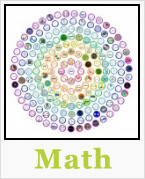



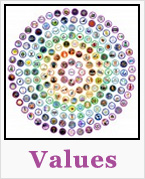
OPEN SOURCE CURRICULUM OUTLINES (click image for summaries and links to complete pages)
CARE
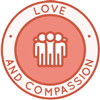
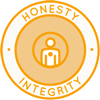
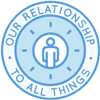
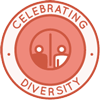
SHARE
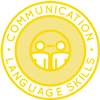
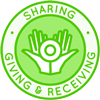
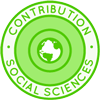
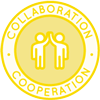
PLAY
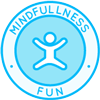
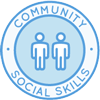
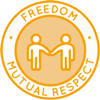
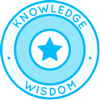
OPEN SOURCE TEACHING METHODOLOGY SUMMARIES
Montessori | Waldorf | Orff | Reggio | Multi-Intelligence | Bloom's Taxonomy | Study Tech | I-WE
INDEX OF ALL THE ONE COMMUNITY OPEN SOURCE LESSON PLANS

Click this image for the Lesson Plans for Life page with links to the rest of the lesson plans
THE WORLD'S LARGEST ONLINE FREE EDUCATION RESOURCE ARCHIVE
RELATED CONTENT AND OTHER RELATED RESOURCES
We're building this resource section. Click here if you have a suggestion or resource for this page.

























 One Community
One Community




